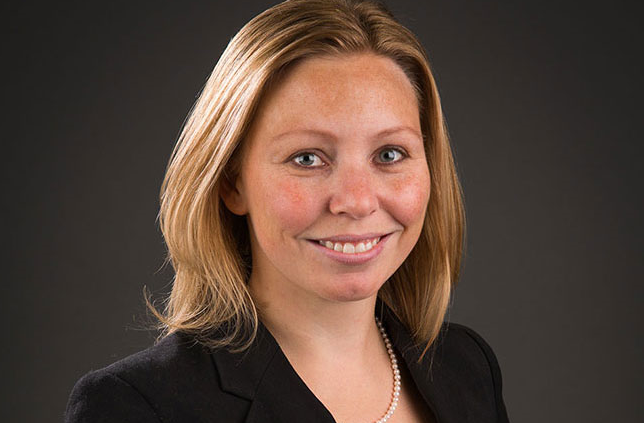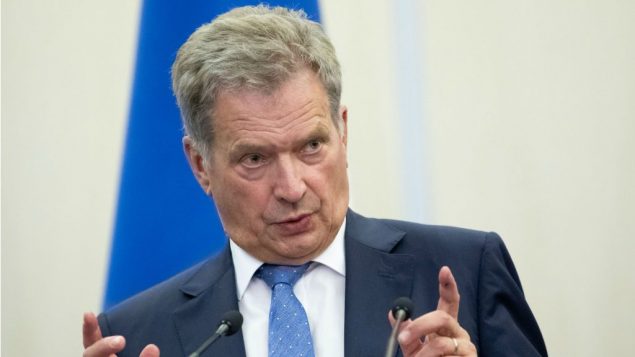All year long, Eye on the Arctic brings you news, and newsmakers, from around the North.
But as 2019 gets underway, we’ve taken a pause to check in with our Eye on the Arctic expert bloggers to get their take on the past year in Arctic news and what northern news junkies should be watching for in the months ahead.
In this instalment, we spoke with Heather Exner-Pirot, a managing editor at the Arctic Yearbook, a peer-reviewed publication devoted to the North.

Heather Exner-Pirot, a managing editor at the Arctic Yearbook. (Courtesy Heather Exner-Pirot)
Eye on the Arctic: How did Arctic news coverage change in 2018 compared to other years?
Heather Exner-Pirot: For me, the coverage has been roughly the same for the last 10 years. That’s what’s fascinating is that the narrative about the Arctic, how southerners and urban dwellers perceive the Arctic, is so entrenched that we’re kind of reading the same story over and over again in the mainstream media.
So just more of the same?
It is. I wrote a recent article about it “How to write an Arctic story in 5 easy steps.” There’s a formula. You see the same graphs, the same sea-ice extent from 1979, the same sea routes, the same map of Russia, the same map of the top of the world in every single article. Maybe if you’re not a keen Arctic observer you don’t notice that it’s the same article, over and over again. But those of us who follow it closely have read it all before.
What were your two top Arctic stories this year?
It feels like everything’s in a bit of a holding pattern, not that much has changed. Even for the Arctic Yearbook, we do a timeline of events and there wasn’t really anything that moved the needle. Some of the bigger stories internationally: China had a White Paper on the Arctic, Trump and Putin met in Helsinki. Those were interesting stories but nothing really changed there. In Canada, I will say when Minister of Northern Affairs Dominic Leblanc came onto the scene in August, there was a little more action and a lot less talk, but still, everyone’s kind of waiting for that Arctic Policy Framework to come out.
Has there been a difference in Arctic Council coverage since it moved back to Europe (Finland 2017-2019) from back-to-back North American chairmanships (United States 2015-2017 & Canada 2013-2015)?
I don’t think, for myself, (Finland) has been a particularly exciting chairmanship. Everyone thinks it’s well run. The Finns are doing a great job managing it, but there isn’t anything transformative that I can see coming down the pipeline.
Was there any Arctic issue or event that you felt was overlooked, underreported and that just didn’t get the attention it deserved in 2018?
Canada’s national Inuit organization Inuit Tapiriit Kanatami (ITK): (Organization president) Natan Obed and ITK have been taking more and more power over issues that affect Inuit. For me as a political scientist, this is a fascinating move because the territorial governments that have more of a mandate or more authority on some of these issues, for example tuberculosis or mental health, are kind of standing by and letting ITK move into these areas where ITK hasn’t been before. I’m fascinating to see how this will all play out. Does ITK have the capacity to do this? Does it have the funding? What are the governance implications? Everyone’s kind of just stepping aside and letting Obed do his thing, and cetainly to his credit. But I’m very curious as to how this plays out.
It seems like every week there’s a new announcement from them: environmental protection or economic development, education or new governance relations with Canada. There’s obviously a lot of momentum, I’m just wondering when, for example, (Canada’s eastern arctic territory of )Nunavut might have something to say about it.
Looking ahead to Arctic news in 2019 – what are two or three of the big stories or issues you’ll be following or watching for?
Canada’s Arctic Policy Framework: I was looking for the Arctic Policy Framework in 2018 and it didn’t happen. I’m assured now that it’s happening within the next few months. I’m very curious about what’s going to be in there. How ambitious will it be? How will it be received? What kind of money will be attached? Will it be more of the same or is there going to be something different about the way the federal government deals with the North, the way the North deals with the North and the strategies that people have to promote health and prosperity.
Arctic Council ministerial in May 2019: As I said, I don’ think there’s that much exciting things coming out of the Finnish chairmanship but there’s two things I will be watching for; one is the strategic plan that the Arctic council has been working on, what it’s going to be doing for the next five, 10 years. I’m curious if they have the will, or desire, to transform something. It’s an institution that was created in 1996, in a very different time and it could probably do with a little revamping and I wonder if there’s an appetite on their part to do that.
The summit idea that just won’t die: The Finnish president is still talking about hosting an Arctic heads of state meeting even though it would include U.S. President Donald Trump and Russian President Vladimir Putin, even though they hosted a summit in Helsinki. Frankly I think Finland has been distracted by this and it’s going to affect the rest of their chairmanship.
Now, they’ve chosen a topic, black carbon. I can’t help but say, at the beginning, this was only about having a meeting, and the black carbon came after, so to position it as some kind of altruistic environmental message, not as a summit looking for a topic.
The above Q&A has been edited and abridged.
Listen to the full Eye on the Arctic interview with Heather Exner-Pirot:
Heather Exner-Pirot’s Eye on the Arctic blogs can be found here.
Write to Eilís Quinn at eilis.quinn(at)cbc.ca








For reasons beyond our control, and for an undetermined period of time, our comment section is now closed. However, our social networks remain open to your contributions.